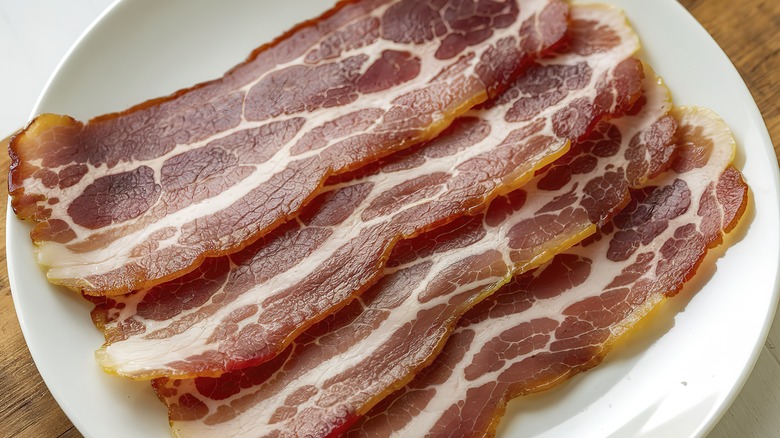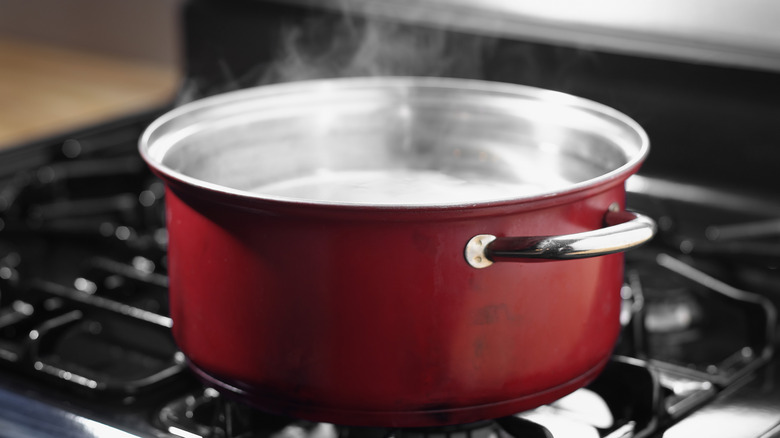Should You Cook Bacon In A Pot?
Though bacon is almost universally beloved as a breakfast staple, few things are more divisive than opinions on the best way to cook it. Bacon purists often argue that the griddle is the only way to go, while a more modern take is that the oven gets bacon crisp without all the mess. Home cooks in a hurry might even advocate for making bacon in the microwave, which sounds blasphemous but can work fairly well in a pinch.
Recently, a new technique has been making the rounds through social media that involves putting your bacon into a deep pot and gently swirling it around as it cooks. At first, this method looks like a crime against bacon as the strips become pink and rubbery and begin to curl. It seems as though the steam generated inside the pot is, predictably, turning the bacon into a limp, greasy mess.
However, after a few minutes, something absolutely magical begins to happen. As the bacon fat renders, it pools in the bottom of the pot, quickly becoming hot, bubbly, and golden. Once this pool of luscious fat is deep enough, the bacon essentially begins to deep fry itself, becoming crisp and beautifully garnet-colored with a light char on the edges. Rather than being rage-bait for views, this appears to be a legitimately practical and delicious way to prepare bacon.
How to correctly cook bacon in a pan
The first thing to note about this technique is that it works best for cooking bacon in bulk. If you only need a few strips for a BLT or to enjoy alongside your morning bagel, you're better off using a more traditional method. However, if you're prepping make-ahead breakfast burritos for your freezer or getting ready to host a holiday brunch, the pot method offers a fairly fast and mess-free way to cook a big batch of bacon all at once.
Second, it's vital to choose the right pot for this method. A deep pot with high sides helps trap heat and moisture crucial to melting and rendering the bacon fat. The pot's high sides also easily keep grease contained, preventing it from spattering all over your stove and all over you. Not only does this make cleanup much easier, it makes preparing bacon safer and more comfortable, as you won't have to worry about grease burns or oil-stained clothing.
Finally, keep in mind that this is not a fussy cooking method. While you need to keep an eye on your bacon and give it a stir at regular intervals, leaving it lidded is essential to helping build and maintain the ideal temperatures. This allows you to simultaneously prep other parts of the meal while your bacon quietly bubbles to crisp perfection in the background.

